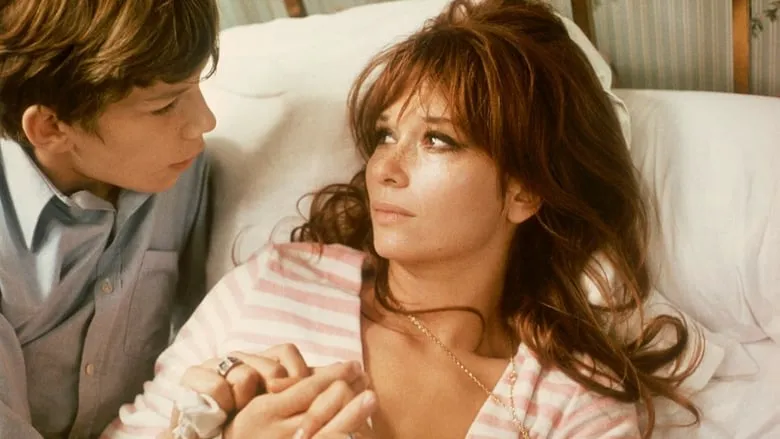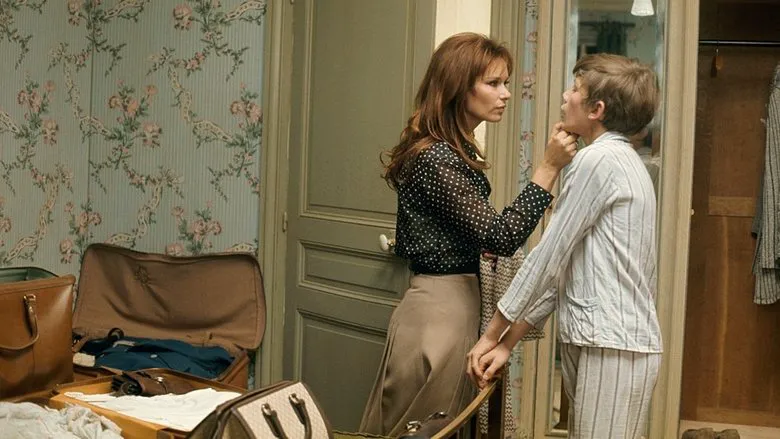Whisper of the Heart: A Timeless Studio Ghibli Masterpiece
“Whisper of the Heart” stands out as a genuinely heartwarming and exquisitely rendered coming-of-age anime drama that deftly explores the tender complexities of first love and the monumental decisions young people face as they transition into adulthood. It’s a film that resonates deeply, offering a universal narrative wrapped in the exquisite artistry hallmark of Studio Ghibli.
The story centers on Shizuku Tsukishima, a thoughtful and imaginative 14-year-old middle school student, who finds solace and adventure primarily within the pages of books. During a seemingly ordinary summer vacation, Shizuku observes an intriguing anomaly on the checkout cards of her library books: the consistent presence of one name, “Seiji Amasawa,” always preceding hers. This recurring coincidence sparks her profound curiosity, making her wonder about the identity of this mysterious, kindred literary spirit.
Her pursuit eventually leads her to Seiji, a boy who surprisingly turns out to be a classmate. Their initial encounters are far from the idealized romantic notions Shizuku might have harbored; instead, they are somewhat clumsy and realistic, yet they quickly evolve into a robust and meaningful friendship. Seiji, equally passionate, reveals his profound dedication to the art of crafting violins and his ambitious plans to forgo traditional high school in favor of intensive study at a prestigious violin-making school in Cremona, Italy. Inspired deeply by Seiji’s unwavering commitment to his dream, Shizuku is moved to confront her own creative aspirations, deciding to channel her energy into writing a fantasy novel. Despite the looming pressure of crucial high school entrance exams, she immerses herself wholeheartedly in the narrative, crafting a captivating tale around an elegant cat figurine, “The Baron,” which belongs to Seiji’s grandfather, an amiable antique shop owner.

A Director’s Enduring Legacy
“Whisper of the Heart” holds a unique and poignant place in Studio Ghibli’s history as the sole feature film directed by Yōshifumi Kondō. His tragic pre-mature passing in 1998, widely attributed to overwork, sent shockwaves through the animation industry and profoundly affected Hayao Miyazaki. Kondō’s death served as a stark wake-up call for Miyazaki, prompting him to reassess and ultimately adopt a more sustainable and less demanding work schedule, profoundly influencing the studio’s future production practices.
The Powerhouse and Its Vision
Studio Ghibli itself was founded as a creative sanctuary, specifically designed to nurture the unparalleled artistic visions of its two co-founders, Hayao Miyazaki and Isao Takahata. Such was the extent of their creative influence and control within the studio that Mamoru Oshii, the renowned director of “Ghost in the Shell,” humorously but pointedly likened Ghibli to the Kremlin, with Miyazaki and Takahata at its helm as totalitarian leaders. This jest, though light-hearted, underscored a deeper reality: artists seeking truly independent creative paths often found it challenging to thrive or stay long within Ghibli’s intensely focused environment. As the 1990s progressed and Miyazaki began pondering the critical question of succession, only one individual truly stood out as a potential heir to the studio’s directorial legacy: Yōshifumi Kondō, who had been a close collaborator with both founders since the late 1960s.
A Groundbreaking Collaborative Effort
“Whisper of the Heart” achieved a notable technical milestone as it was the first Japanese film ever to be released with a Dolby Digital soundtrack, signifying its innovative approach to audiovisual presentation. This cutting-edge audio format enhanced the film’s immersion, allowing audiences to fully appreciate the intricate sound design.
To fully assess Kondō’s capabilities and directorial prowess, Miyazaki entrusted him with the challenging yet rewarding task of adapting Aoi Hiiragi’s single-volume comic, also titled “Whisper of the Heart,” for its big-screen release in 1995. However, it is crucial to recognize that this project was very much a collaborative endeavor, far from a solo directorial effort by Kondō. Hayao Miyazaki himself meticulously penned the screenplay, which diverged substantially from Hiiragi’s original manga, adding layers of depth and thematic richness. He further contributed by drawing the comprehensive storyboards, meticulously planning every visual sequence. Adding to his multifaceted involvement, he even lent his creative talent to composing a delightfully humorous song about Tokyo, affectionately titled “Concrete Roads,” which was directly inspired by John Denver’s timeless classic, “Take Me Home, Country Roads.” Therefore, the widespread acclaim (or any potential criticism) for the film’s resounding success is, and rightfully should be, attributed to the synergistic efforts of both Kondō and Miyazaki, reflecting their shared creative vision. Tragically, Kondō’s independent artistic potential remained largely unfulfilled, as his life was cut short in 1998, at the remarkably young age of 47, shortly after he had completed his significant work on Miyazaki’s epic masterpiece, “Princess Mononoke.”
Box Office Triumph
Upon its release in 1995, “Whisper of the Heart” captivated audiences across Japan, topping the local box office and ultimately grossing an impressive 1.85 billion yen, solidifying its commercial success and demonstrating its immediate appeal to a wide viewership.
From Shojo Manga to Profound Coming-of-Age Narrative
In stark contrast to Isao Takahata’s “Only Yesterday,” which drew its inspiration from a nostalgic manga aimed at adult women, Aoi Hiiragi’s original “Whisper of the Heart” comic was prototypically a shojo (young girl) romance. It shared many conventional tropes found in popular anime series of the genre, such as “Marmalade Boy.” These typically included intricate multiple couple dynamics, the ever-present love triangle, a protagonist characterized by her kind clumsiness, a dreamy male lead with a romantically inclined hobby (painting in the manga, violin-making in the film), complex familial relationships, and passionate yet ultimately chaste romantic plot twists.
The Journey of a Song
Perhaps one of the most memorable and charming elements of the film is its iconic use of John Denver’s “Take Me Home, Country Roads.” The film’s protagonist, Shizuku, undertakes the heartfelt task of translating and performing this beloved song into Japanese, a pivotal moment in her character development. Interestingly, Hayao Miyazaki initially intended to perform the translation himself, feeling a strong connection to the song’s themes. However, he ultimately assigned this sensitive task to Mamiko Suzuki, the 19-year-old daughter of producer Toshio Suzuki. Miyazaki’s reasoning was insightful: he believed that the translation should authentically sound as if it were penned by a young girl, perfectly capturing the spirit and unvarnished voice of Shizuku herself, lending an additional layer of genuineness to her journey.
Nevertheless, Miyazaki and Kondō harbored a distinctly different vision for the film adaptation. They were, notably, not interested in producing a straightforward, conventional romance laden with predictable tropes. Instead, they shrewdly pared down the more overtly romantic elements present in the original shojo story and transformed it into a deeply poignant and intellectually engaging film about personal growth. Their directorial focus shifted to highlighting the characters’ crucial first adult decisions. This encompassed not only navigating the nascent stirrings of romantic feelings but also the weighty choices concerning future careers and the intense preparation for high school entrance exams—an especially significant and high-stakes hurdle within the Japanese education system. Much like the majority of Ghibli films, “Whisper of the Heart” notably lacks traditional, overt villains, avoiding any clear-cut antagonist. Instead, the narrative derives its compelling power from the protagonists’ intricate internal dilemmas, which are portrayed with such nuance as to be universally relatable. This artistic choice renders the film remarkably believable and far more resonant than, for instance, Miyazaki’s own “Kiki’s Delivery Service,” which, despite its charm, occasionally relied on the contrivance and peculiar conventions of its magical witch world.

A Meticulous and Realistic Setting
To reinforce the film’s profound realism and subtly convey intricate social nuances, the dedicated Studio Ghibli team undertook an extraordinary effort: they meticulously recreated a specific western suburb of Tokyo, drawing inspiration from real-world locations. This very same locale had previously served as the setting for Takahata’s “Pom Poko,” demonstrating a shared appreciation for authentic backdrops. While the artists didn’t resort to simple photographic reproduction, their approach resulted in a vibrant and thoughtful artistic interpretation of West Tokyo, breathing life into its everyday scenes. The film masterfully captures the very essence of central Japan, displaying its characteristic blend of modern apartment buildings and traditional private homes, the seamless integration of new and old constructions, undulating hills and verdant valleys, the omnipresent trains and bicycles, bustling highways intersecting with quaint narrow streets, and the familiar institutions of schools, lively parks, and quiet libraries. The film even subtly delineates the socio-economic disparities between Shizuku and her best friend Yuko through the detailed visual cues of their respective homes, adding insightful layers of authenticity and social commentary.
Real-Life Inspiration for the Whimsy
The captivating subplot involving the elegant cat figurine, “The Baron,” was not merely a flight of fancy but drew inspiration from a genuine, heartwarming experience in Aoi Hiiragi’s own life. She had once coveted an expensive figurine she spotted in a store, saving diligently to afford it. To her dismay, by the time she amassed enough funds, the item had already been sold, leaving her disappointed. Yet, in a delightful twist of fate characteristic of the film’s charm, Hiiragi’s fiancé had secretly purchased the figurine as a surprise birthday gift for her, illustrating the serendipitous magic that life sometimes offers. This personal anecdote lends a deeper layer of authenticity and sweetness to Shizuku’s journey with the Baron, rooting the fantasy in a relatable human experience.
Unlike its Ghibli counterparts “Only Yesterday” and “Pom Poko,” “Whisper of the Heart” notably doesn’t demand a specialized, in-depth understanding of Japanese culture to appreciate its narrative. The fundamental challenges and triumphs faced by the Japanese teenagers within the film are universally relatable and immediately comprehensible to audiences worldwide, transcending cultural barriers. The film seamlessly weaves in elements of fantasy, most notably through Shizuku’s vivid imagination, which transports her into a breathtaking magical realm reminiscent of the fantastical worlds seen in “Castle in the Sky,” adding a layer of whimsical escapism. Additionally, the enchanting presence of Seiji’s grandfather and his charming, idiosyncratic antique shop further imbues the narrative with a delightful touch of whimsy and enchantment, grounding the magical elements within a realistic setting.
While “Whisper of the Heart” might not be the most action-packed or overtly dramatic entry in the illustrious Studio Ghibli canon, its narrative is undeniably captivating and deeply engaging. Any perceived lack of high-octane drama is more than adequately compensated by the film’s profound emotional core and the irresistible charm inherent in its characters, which allows for a more contemplative and resonant experience. Every single frame is a testament to meticulous craftsmanship, inviting viewers to pause, appreciate the intricate artistry, and truly let the scenes breathe, revealing the dedication of its creators. Even seemingly minor characters, such as the enigmatic stray cat who first leads Shizuku to Seiji’s grandfather’s humble dwelling, are brought to life with an astonishing level of detail and affectionate care, showcasing Ghibli’s commitment to building a rich and believable world.
In conclusion, “Whisper of the Heart” transcends its animated medium to stand as a truly flawless Studio Ghibli masterpiece. It’s a film that resonates across generations, offering a fresh, inspiring perspective on life and the journey of self-discovery, even for adult viewers who can reflect on their own coming-of-age experiences. Its timeless themes, exquisite animation, poignant storyline, and deep character development make it an absolutely essential viewing experience, particularly for young individuals navigating their own paths toward adulthood and grappling with dreams and decisions.